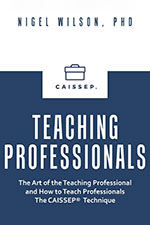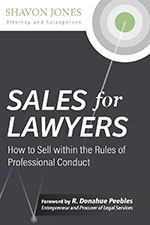 VERDICT: Not for Me, Maybe for You
VERDICT: Not for Me, Maybe for You
The Inheritor’s Guide: A Legal, Financial, and Emotional Guide for Adult Children Managing Their Parent’s Legacy
By Anna E. Byrne (Middletown, DE: FlowerPressPublishing.com, 2021).152 pgs. $24.95. Order, www.amazon.com.
Reviewed by Mark T. Johnson
The Inheritor’s Guide is a layperson’s handbook on matters related to settling a loved one’s estate. Author Anna Byrne, a Massachusetts attorney and financial advisor, undertakes the ambitious goal of addressing the legal, financial, and emotional issues of an estate administration. She provides the reader sound advice, direction, and compassion, despite a few gaps and shortcomings.
Drawing on her 25 years of experience as an estate attorney, Byrne provides information about the steps and matters involved in settling an estate through probate or a trust. Her style is very readable, which is especially suitable for her intended lay audience. She also advises the reader to engage the assistance of legal, financial, and tax professionals for efficient and knowledgeable estate administration. Furthermore, she offers checklists on the stages of estate administration, which help the reader follow the process. Byrne also includes an appendix of resources, which may be a helpful starting point but is a bit scant and is incomplete by nature.
Although Byrne mentions most topics of an estate administration, she is not consistently thorough in covering the legal aspects of an estate. For example, the explanation of how to open an uncomplicated estate, from gathering information to court procedures, is nearly exhaustive. In addition, her discussion of inventorying and securing tangible personal property verges on overkill. In contrast, she does not go into significant detail on resolving various challenges that may arise during an estate administration. For example, she does not cover the issues of locating estranged heirs, dealing with claims that may be disputable, and making distributions of specific bequests.
In her advice about financial matters of an estate, Byrne also demonstrates varied thoroughness. She covers estate taxes (including Massachusetts estate tax matters), appraisals of estate assets, and prudent-investment rules in great detail. This thoroughness could give the reader the mistaken impression that these topics are always crucial in an estate, even when one or more of them may not be relevant to a particular estate. On the other hand, Byrne glosses over some topics an inexperienced lay reader may need to know, such as that lifetime gifts may be included in calculating estate tax and that some states impose an inheritance tax.
Finally, Byrne addresses the emotional issues that may affect someone settling an estate. Byrne turns to Olga Tolscik, a psychiatrist and therapist, to contribute reflections and check-ins for dealing with grief and emotions after a loved one’s death. The sections related to grief and emotions give readers permission to acknowledge their feelings in the estate process and cope with family dynamics inherent in the death of a family member. Yet, some readers may find the sections related to emotions incomplete or incompatible with the rest of the book, preferring other resources or counseling as more suitable for a grieving reader.
The Inheritor’s Guide is a good starting point for someone charged with settling the estate of a loved one. However, as the author urges, the guidance of legal, financial, and tax professionals is important to supplement the book. Furthermore, state-specific concerns can only be addressed by engaging local professionals and resources.
Mark T. Johnson, U.W. 2008, is a partner with Johnson Teigen LLC in Fitchburg. When he is not reading and writing on legal topics, he enjoys reading a good cookbook.
 VERDICT: Not for Me, Maybe for You
VERDICT: Not for Me, Maybe for You
Subtle Tools: The Dismantling of American Democracy from the War on Terror to Donald Trump
By Karen J. Greenberg (Princeton, NJ: Princeton Univ. Press, 2021). 270 pgs. $26.99. Order, www.amazon.com.
Reviewed by Matthew Hallingstad
Subtle Tools, by Karen J. Greenberg, a leading expert on United States security, is a well-written review of four tools that have been used, intentionally or otherwise, to thwart foreign and domestic threats, real and unreal, since Sept. 11, 2001. The four “subtle tools” are:
1) Degradation of language (into fuzzy, imprecise, and confounding language);
2) Bureaucratic porousness (confusion and imprecision in the roles and responsibilities of government institutions);
3) Secrecy and the withholding of facts; and
4) Abandonment of legal and procedural norms (for lawmaking, oversight, judicial review, transparency).
Want to Review a Book?
Please request a book and writing guidelines from Wisconsin Lawyer managing editor Karlé Lester, at klester@wisbar.org or (608) 250-6127. Reviewers may keep the book reviewed. Reviews of about 500 words are due within 45 days of receiving the book. Reviews are published, space permitting, in the order received and may be edited for length and clarity.
The book’s premise is that these four tools, while having some effectiveness against those threats, have significantly weakened the strength of U.S. democracy.
Greenberg briefly introduces the tools and then draws a rather straight line from the aftermath of September 11 to the many challenges we face today. She touches on the PATRIOT Act and the creation of the Department of Homeland Security but spends the last three-quarters of the book addressing the many ways in which former President Trump capitalized on and expanded the use of subtle tools, weaponizing them against our democracy.
Although she notes that the early months of President Biden’s administration suggested a partial retreat from the expansive and excessive use of the tools far beyond their intended purpose, her cautious optimism may be unfounded. Even today, more than one year after Biden’s inauguration, there are still pervasive doubts about the legitimacy of the 2020 election and growing concerns about the 2022 and 2024 elections. One can easily imagine scenarios in which losing candidates (of any forthcoming elections) use the subtle tools to delegitimize the election, cause chaos, undermine faith in our systems, and push our democracy ever closer to the brink.
And this is where Subtle Tools falls short. After reading about the use of the tools and the very real threats they pose to U.S. democracy for 200-plus pages, it is disappointing to arrive at the end and find out that all Greenberg has for us is a set of unanswered questions and a proclamation that “only if the subtle tools are laid to rest will the future of democracy in America have its best chance.” She presents no ideas or guidance on how to lay them to rest or even slow them down. She clearly “knows her stuff” but almost any author could assemble a review of the erosion of norms over the last 20 years. Not every author could chart a path forward, but, presumably, Greenberg could have. That she did not even attempt to do so feels like a bit of a cop-out.
Matthew Hallingstad, U.W. 2005, practiced law for five years and now helps ensure that you get your Amazon packages on time.
 VERDICT: Not for Me, Maybe for You
VERDICT: Not for Me, Maybe for You
Teaching Professionals: The Art of the Teaching Professional and How to Teach Professionals the CAISSEP® Technique
By Nigel Wilson, Ph.D. (Bloomington, IN: Archway Publishing, 2021). 87 pgs. $8.99. Order, www.amazon.com.
Reviewed by Joe Ahlers
Think back on your life – it is likely that for at least the 20 years after you turned age 5, you were educated in a classroom of some kind by a professional educator. Whether it was Mrs. Murphy deciding which kind of clay you were molding in first-grade art class or Professor Jones giving a vibrant lecture on the history of insurance law in America, each (hopefully) gave thought and consideration before coming into the classroom to what they intended to teach, how they intended to teach it, and what they wanted you to learn during those particular moments that they had to shape your mind.
The CAISSEP Method is a revised take on an age-old process of educators carefully and purposefully thinking through the means and methods we use to educate adults. Wilson’s method – clarity, analysis, inquiry, system, structure, emphasis, and the professional – stresses student problem-solving and analysis-driven learning over the traditional “lecture” style that has been the hallmark of education for decades. Attorneys should already be used to this: student-involved learning and a feedback loop is somewhat close to the Socratic method (aka my torts professor telling me on the spot how wrong my answers were). It’s not the only way to teach, but Wilson posits it’s the most effective way for the student-professional (the focus of his method) to learn and retain knowledge.
Some lawyers have a natural talent for public speaking but that doesn’t necessarily translate to the classroom. Even the best knock-out closing argument at trial isn’t suited for CLE if the goal is for the learner to walk away from the program meeting certain objectives – getting up to speed on DUI law or learning landlord-tenant law, for example. The delivery methods have distinct purposes, and Wilson’s focus on why this “lectured at” style of educating doesn’t work for the adult learner and how an educator can ensure information is better received by the intended audience forms the basis for his CAISSEP method.
Is this information really important? For the professional educator, yes. People learn differently throughout their lives, from elementary school through continuing education as an adult. We’ve all attended that CLE session that made us cringe: the 80-slides-in-60-minutes barrage, the snooze-fest, and the fancy-slides-but-little-content attorney who is very proud of his PowerPoint skills, to name just a few. All fail to achieve the instructor’s goal because of what Wilson deems a lack of planning – failure to use a system like CAISSEP to systematically decide which content the adult learner needs to know and how to actually teach it in a way that resonates with the audience.
Wilson’s book, which at 87 pages reads more like a Ph.D. thesis, could be a worthy roadmap for people reconsidering how they develop content for adult learners or whether their teaching methodologies work for the professional audience. Even the litigator could learn a thing or two about swaying the jury by following Wilson’s teaching methodologies because they ultimately share the same goal: thoughtful consideration of how information will be presented in a way that positively affects the listener. But in reality, unless you happen to be one of the other 300 (or so) members of the State Bar of Wisconsin who teach adults full time, this book probably will add little to no value to your professional life.
Joe Ahlers, U.W. 2011, is an attorney with the United States Air Force. He is a full-time instructor at the Air Force Judge Advocate General’s School. This review is the author’s views alone and does not represent the views of the Department of Defense or the United States government.
 VERDICT: Not for Me, Maybe for You
VERDICT: Not for Me, Maybe for You
Sales for Lawyers: How to Sell within the Rules of Professional Conduct
By Shavon Jones (Miami, FL: Shavon Jones, 2019). 199 pgs. $30. Order, www.amazon.com.
Reviewed by Emily McKeown
If you have ever felt intimidated by the prospect of selling your legal skills, you are not alone. The topic is rarely taught by law schools, and most firms expect their lawyers to develop the skill only after making partner. But selling legal services is now more important than ever as alternative legal service providers enter markets previously only available to licensed attorneys. This is the climate that prompted Shavon Jones to write Sales for Lawyers: How to Sell within the Rules of Professional Conduct.
The book offers valuable guidance on the steps of the sales process: generating leads, qualifying prospects, converting prospects into clients, developing a pricing model, and closing the deal. Integral to the sales conversation is a process that Jones calls “uncovering the prospect’s PAIN.” Because legal services are a need rather than a want, a good salesperson will uncover the potential client’s pain and then look for clues that the client is ready for relief in the form of legal services. Of course, an attorney’s role in such a conversation is to listen. Attorneys are not there to talk about their own qualifications but to ask questions, uncover the prospect’s pain points, and ultimately let the potential client do the talking.
Jones offers an analysis of a variety of lead-generation tools. In doing so, she draws a distinction between sales (a transactional process when a prospect is qualified and converted into a purchaser and goods or services are exchanged) and marketing (a relational process in which the opportunity is more distant). Techniques such as networking events, civic engagement, and writing will be familiar to an attorney adept at more traditional methods of legal business development. But Jones introduces techniques typically left to sales professionals, such as door-to-door sales, using sales agents, and identifying target-rich environments.
Executing these sales techniques within the rules of professional ethics is the subject of a single chapter, where Jones identifies the ABA Model Rules of Professional Conduct that apply to a variety of sales techniques. Lawyers looking to apply a sales mindset to growing their book of business would be wise to review this chapter to ensure their services are being sold ethically. Ultimately, however, the amount of text devoted to interpretation of the rules of professional conduct is light. The author revisits the idea near the end of the book, where she shares her ideas on how the model rules might be changed in the future.
Selling does not come naturally to most lawyers, and being an effective salesperson takes practice. This book will be a valuable tool for attorneys who have mastered more traditional methods of legal business development and want to infuse their practices with techniques typically left to sale professionals. Newer attorneys might find that they need to master the basics first before tackling a sales system.
Emily McKeown, Marquette 2013, is a business development manager at Godfrey & Kahn S.C., Milwaukee.
